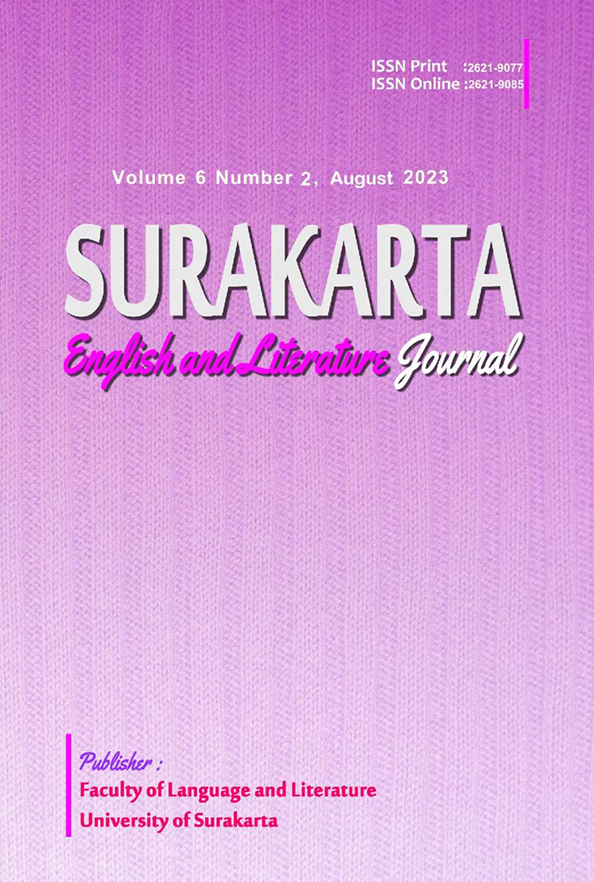Metaphorical Meaning of Taylor Swift’s Reputation Album: A Semantic Approach
Keywords:
metaphorical meaning, Reputation Album, semantic approachAbstract
Taylor Swift is a famous singer-songwriter, and her songs are enjoyed by people worldwide. One of
her well-known works is a studio album called Reputation. This album is composed of many
metaphors as figurative language, which is sometimes hard to understand. However, to run the
communication well, listeners have to understand the message the songwriter wants through this
album. Due to this importance, the researchers studied the Metaphorical Meaning of Taylor Swift’s
Reputation Album study. This study aims to examine the meaning of the metaphorical phrases in the
album based on Leech’s metaphoric rule and Yule’s meaning theory. The data were analyzed by the
qualitative method along with a questionnaire, as a part of the quantitative approach to support data
validation, mainly filled by Taylor Swift fans and people who often listened to her songs. The research
findings show that all denotative meanings are like the connotative ones in the sense of semantic
properties, which are abstract and build patterns. The findings are expected to make listeners better
know and understand the metaphors and their meanings in the Reputation Album






